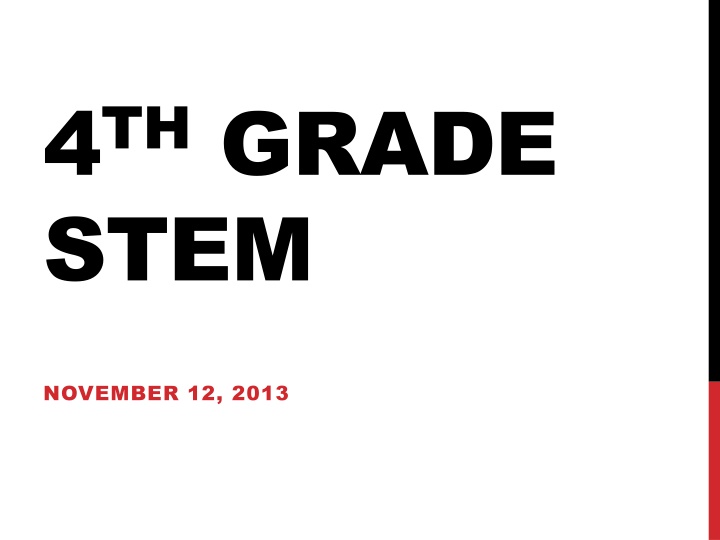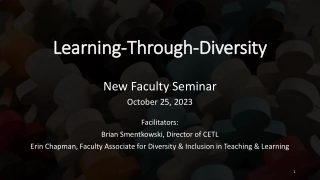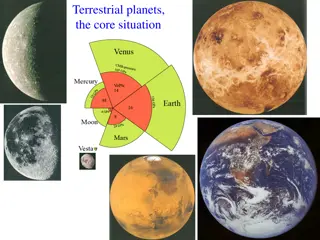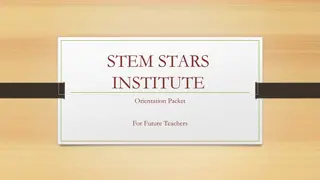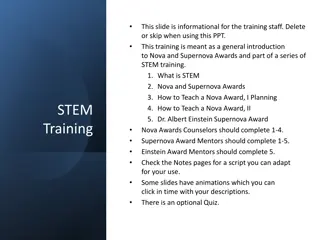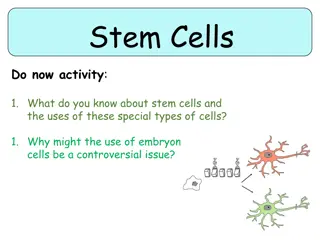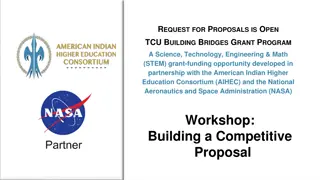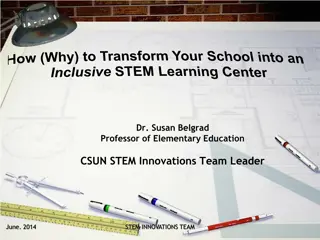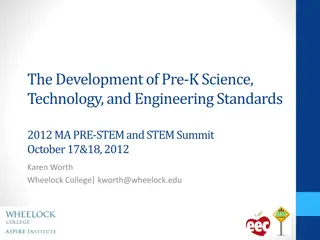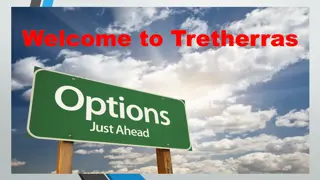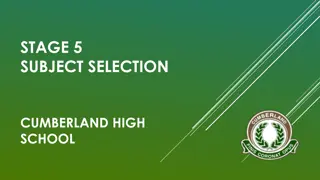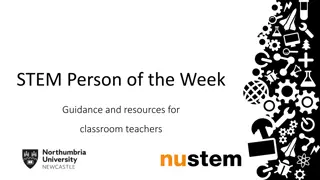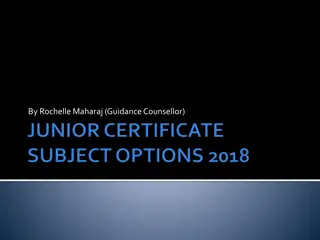Grade 4 STEM & Core Subjects Overview
In this comprehensive overview, students in 4th grade delve into STEM, science core concepts, math standards, social studies, and language arts. They explore topics like the water cycle, measurement, human impact on the environment, problem-solving, and writing skills.
Download Presentation

Please find below an Image/Link to download the presentation.
The content on the website is provided AS IS for your information and personal use only. It may not be sold, licensed, or shared on other websites without obtaining consent from the author.If you encounter any issues during the download, it is possible that the publisher has removed the file from their server.
You are allowed to download the files provided on this website for personal or commercial use, subject to the condition that they are used lawfully. All files are the property of their respective owners.
The content on the website is provided AS IS for your information and personal use only. It may not be sold, licensed, or shared on other websites without obtaining consent from the author.
E N D
Presentation Transcript
4THGRADE STEM NOVEMBER 12, 2013
SCIENCE CORE Science Standard 1: Students will understand that water changes state as it moves through the water cycle. Objective 2: Describe the water cycle. e. Describe how the water cycle relates to the water supply in your community.
MATH STANDARDS Operations and Algebraic Thinking 2. Multiply or divide to solve word problems involving multiplicative comparison, e.g., by using drawings and equations with a symbol for the unknown number to represent the problem, distinguishing multiplicative comparison from additive comparison. 3. Solve multistep word problems posed with whole numbers and having whole-number answers using the four operations, including problems in which remainders must be interpreted. Represent these problems using equations with a letter standing for the unknown quantity. Assess the reasonableness of answers using mental computation and estimation strategies including rounding.
MATH STANDARD Measurement and Data Solve problems involving measurement and conversion of measurements from a larger unit to a smaller unit. 1. Know relative sizes of measurement units within one system of units including km, m, cm; kg, g; lb, oz.; l, ml; hr, min, sec. Within a single system of measurement, express measurements in a larger unit in terms of a smaller unit. Record measurement equivalents in a two- column table. For example, know that 1 ft is 12 times as long as 1 in. Express the length of a 4 ft snake as 48 in. Generate a conversion table for feet and inches listing the number pairs (1, 12), (2, 24), (3, 36), ... 2. Use the four operations to solve word problems involving distances, intervals of time, liquid volumes, masses of objects, and money, including problems involving simple fractions or decimals, and problems that require expressing measurements given in a larger unit in terms of a smaller unit. Represent measurement quantities using diagrams such as number line diagrams that feature a measurement scale.
SOCIAL STUDIES Objective 3 Analyze how human actions modify the physical environment. a. Describe how and why humans have changed the physical environment of Utah to meet their needs (e.g. reservoirs, irrigation, climate, transportation systemsand cities).
LANGUAGE ARTS RI.4.3 Explain events, procedures, ideas, or concepts in a historical, scientific, or technical text, including what happened and why, based on specific information in the text. W.4.2 Write informative/explanatory texts to examine a topic and convey ideas and information clearly. W.4.3 Write narratives to develop real or imagined experiences or events using effective technique, descriptive details, and clear event sequences W.4.2c Link ideas within categories of information using words and phrases (e.g., another, for example, also, because)
PRE-ASSESSMENT Freshwater 101 quiz
THE WATER CYCLE: WHAT IS IT? The Water Cycle: See it in action
A DROP IN THE BUCKET How much of the Earth s water is fresh? Freshwater: Why Care About Water? Water is a limited natural resource. -- unavailable -- unequal distribution -- pollution Freshwater and how it is used
MATH AND WRITING How much water do you use? - individually - in a group - as a class How can I limit my water use? Shared Reading and Writing - What is a cycle? - The Human Water Cycle
WATER OUTLOOK IN UTAH http://www.epa.gov/watersense/our_water/tomorrow_beyond.html
WATER USE IN UTAH http://www.conservewater.utah.gov/Blog/Blog.html
IMAGES http://earthobservatory.nasa.gov/IOTD/view.php?id=8132
WATER IMAGES http://climate.nasa.gov/state_of_flux#Elephant_Butte_930x607.jpg
WATER PROJECTS Conserve water water use, engineer a product or system to limit water use (drip systems, faucet sensors, sprinkling systems, dishwasher or laundry systems, low flow toilets) Preserve keep water unpolluted, filter water, desalination of water Harvest collect rain water, tap water in wells and aquifers, store water in dams and reservoirs, desalination of water Freshwater 101 quiz Careers in Engineering
